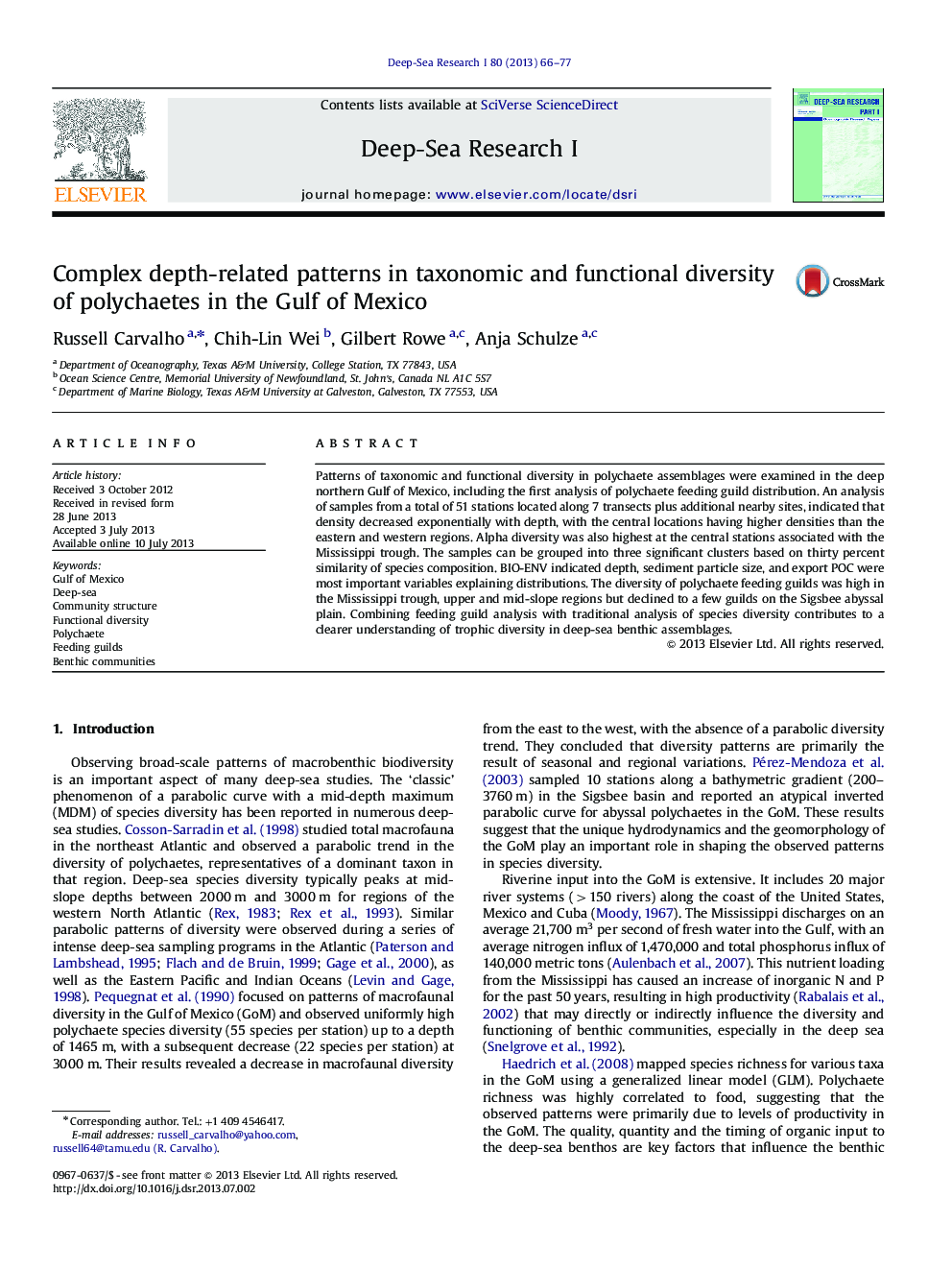| Article ID | Journal | Published Year | Pages | File Type |
|---|---|---|---|---|
| 4534570 | Deep Sea Research Part I: Oceanographic Research Papers | 2013 | 12 Pages |
•We assigned polychaetes, feeding guilds as a proxy for functional diversity and observed mid-depth like maxima in functional diversity.•Our environmental analysis shows depth, export POC and sediment particle size as important variables shaping species and functional diversity.•Combining species diversity, feeding guild and environmental analysis contributes to a clearer understanding of trophic diversity in deep-sea benthic assemblages.
Patterns of taxonomic and functional diversity in polychaete assemblages were examined in the deep northern Gulf of Mexico, including the first analysis of polychaete feeding guild distribution. An analysis of samples from a total of 51 stations located along 7 transects plus additional nearby sites, indicated that density decreased exponentially with depth, with the central locations having higher densities than the eastern and western regions. Alpha diversity was also highest at the central stations associated with the Mississippi trough. The samples can be grouped into three significant clusters based on thirty percent similarity of species composition. BIO-ENV indicated depth, sediment particle size, and export POC were most important variables explaining distributions. The diversity of polychaete feeding guilds was high in the Mississippi trough, upper and mid-slope regions but declined to a few guilds on the Sigsbee abyssal plain. Combining feeding guild analysis with traditional analysis of species diversity contributes to a clearer understanding of trophic diversity in deep-sea benthic assemblages.
